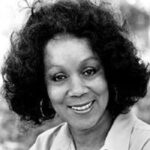
By Hazel Trice Edney
Guest Column
They were nothing short of legendary in their professions. And their works continue to be celebrated nationwide. But, adding to the mystique of America’s racial health disparities, they’ve all died of complications related to Alzheimer’s disease, the most common form of dementia that affects memory, thinking and behavior.
- Charles Ogletree, founder of the Charles Hamilton Houston Institute for Race and Justice at Harvard Law School, was beloved in the civil rights community. Upon his death, he was described by Harvard as “an intellectual giant, an incredible humanitarian, and a legendary teacher, whose contributions to law and to racial equality were unparalleled”. Among his chief causes was justice for the survivors and descendants of the 1921 Tulsa Race Massacre. Ogletree died of Alzheimer’s last year at the age of 71.
- Lani Guinier was a law professor at the University of Pennsylvania in 1993 when she became nationally renowned after President Bill Clinton nominated her as assistant attorney general for civil rights. Following a two-

Charles Ogletree month battle by Republican senators against the nomination because of her views on voting rights and racial inclusion, Clinton ultimately pulled the nomination. Guinier, a lawyer, author, activist and educator who had become the first Black woman to receive tenure at Harvard Law School, died from complications of Alzheimer’s in 2022. Guinier was 71.
- Likewise, renowned psychologist and dynamic motivational speaker Julia Ann Reed Hare, who with her beloved husband, Nathan Hare, founded the Black Think Tank in San Francisco, was revered for her insightful commentary on race and racism in America. Their focus on issues affecting Black love relationships and the Black family received wide acclaim. Upon her death from Alzheimer’s at the age of 80 in 2019, Kwanzaa founder Maulana Karenga described Julia Hare as a “righteous and relentless servant of her people.”
- There was also B. Smith, beloved for her reputation as a genius cook, entertaining and home furnishing guru as well as a professional model. Her B. Smith restaurants drew the rich and famous and people from every walk of life to enjoy her soul food cuisine in New York City and Washington, D.C. The former Ebony Fashion Fair Model became the first African American to be featured on the cover of Mademoiselle magazine in 1976. She died of Alzheimer’s in 2020 at the age of 70.

The deaths of these four African American moguls from Alzheimer’s illustrate the indiscriminate nature of this brain health disease, which is one of the top 10 causes of death in America. Yet, similar to other major diseases, the rate of Alzheimer’s occurrences in the Black community is twice the rate of Whites, according to the Alzheimer’s Association. The Association reports that 21.3 percent of African-Americans age 70 and over are living with Alzheimer’s. About 5.7 million people in the U.S. are currently living with Alzheimer’s disease. Researchers project that will increase to 16 million by 2050.
So, where’s the hope? While medical experts have not established a conclusive explanation for the racial disparity, hope for treatment and the possible cure for the disease is slowly beginning to surface. An AARP article reported in March this year that although Alzheimer’s has long stymied researchers, “that has begun to change, and for the first time, ways to prevent, slow and even treat the disease are emerging.”
Lecanemab (Leqembi), a drug approved by the Food and Drug Administration just last year, reportedly “removes Alzheimer’s hallmark plaques from the brain and slows down memory loss.” This is far from a cure, but is widely viewed as a significant development.

There are other ways to possibly speed up the search for more impactful treatments and even a cure someday. They include the following:
- Volunteers are needed in Alzheimer’s disease research studies. The National Institute of Health stresses the need for more African American participantsin research. Despite the high prevalence of Alzheimer’s disease and related dementias (ADRD) in the Black community “recent estimates suggest research enrollment by those who identify as African American remains limited.”
- African Americans are also needed to participate in research that includes clinical trials. The NIH reports that only 2.4 percent of ADRD trial enrollees identify as Black or African American. This has been largely because of historic distrust of medical science, making it hard for medical scientists to “accurately assess effectiveness” of tested treatments for a “population with high disease burden.”
- Helping to raise money for research through Alzheimer’s walksand other community activities is another way to help.
Self-care is also crucial, including education on brain health issues. AARP provides information on how to keep the brain as healthy as possible.
Charles Ogletree, Lani Guinier, Julia Hare and B. Smith are just a few among millions of African Americans and others who have died from ailments related to ADRD. Although the Lecanemab drug offers hope, according to researchers, even greater hope for a cure will come with increased participation from the Black community.
This article was powered by AARP for the purpose of brain health education.
